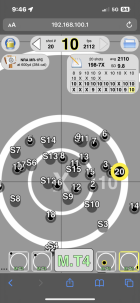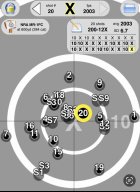Our shooting team consists of four shooters and we practice on a shot marker at 600 yds. We look at velocity and SD at the target between 308, 6 BR , and 223.
From multiple shooting sessions, we have found that the 308 delivers the lowest ( single digit) SDs and the 6 BR and 223 hover in the 10 to 15 area. This data comes from the shot marker program.
It would appear that the smaller the case, the more difficult it is to get into single digits at the target.
SD at the muzzle is one thing but SD at the target brings in an additional group of variables, the weather and of course the bullet itself.
On a given day, we are all shooting thru the same atmospheric conditions, so that affects all the same.
Just curious what u all have seen in this area. Our ammo is loaded using similar processes, cases wt. selected, powder weighed to a single kernel, bullets sorted by bearing surface and pointed and soft seated.
Just curious what SD numbers u all have recorded at 600 yds. For ur various cartridges.
I understand that the chrono numbers on Shotmarker are not calibrated but they do give u a value for comparison.
From multiple shooting sessions, we have found that the 308 delivers the lowest ( single digit) SDs and the 6 BR and 223 hover in the 10 to 15 area. This data comes from the shot marker program.
It would appear that the smaller the case, the more difficult it is to get into single digits at the target.
SD at the muzzle is one thing but SD at the target brings in an additional group of variables, the weather and of course the bullet itself.
On a given day, we are all shooting thru the same atmospheric conditions, so that affects all the same.
Just curious what u all have seen in this area. Our ammo is loaded using similar processes, cases wt. selected, powder weighed to a single kernel, bullets sorted by bearing surface and pointed and soft seated.
Just curious what SD numbers u all have recorded at 600 yds. For ur various cartridges.
I understand that the chrono numbers on Shotmarker are not calibrated but they do give u a value for comparison.













